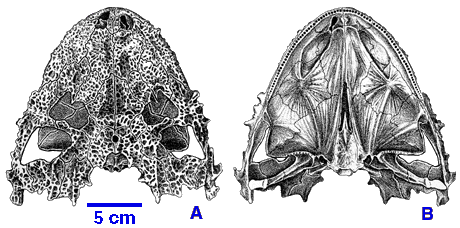
The affinities of lanthanosuchids (lan-than-oh-SOOK-ids) have long been debated. They were at some point thought to be related to seymouriamorphs (stem tetrapods), perhaps because of their strong dermal sculpturing (the ridges and pits on their skull). Affinities to diadectomorphs (stem amniotes) have also been suggested, but lanthanosuchids are now considered to be distant relatives of turtles. According to recent studies, lanthanosuchids do appear to be closely related to the older anapsid Acleistorhinus. Lanthanosuchids are known from the fossil-bearing strata of the Upper Permian of Russia (about 260 million years old).

Lanthanosuchids are characterized by having an extremely flat skull. This feature was once thought to indicate aquatic habits, but recent studies have questioned this conclusion.
The strong dermal sculpturing and the lateral temporal fenestra are not autapomorphies (unique derived characteristics) of lanthanosuchids because these characters are found in at least a few other anapsids.

Ivakhnenko, M. F. 1980. Lanthanosuchids from the Permian of the East European platform. Paleontological Journal 1980: 80-90.

